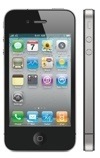According to an updated market forecast from ABI Research (www.abiresearch.com), the installed base of active wireless connected devices will exceed 16 billion in 2014, about 20% more than in 2013. The number of devices will more than double from the current level, with 40.9 billion forecasted for 2020.
“The driving force behind the surge in connections is that usual buzzword suspect, the Internet of Things (IoT),” says ABI Research principal analyst Aapo Markkanen. “If we look at this year’s installed base, smartphones, PCs, and other ‘hub’ devices represent still 44% of the active total, but by end-2020 their share is set to drop to 32%. In other words, 75% of the growth between today and the end of the decade will come from non-hub devices: sensor nodes and accessories.”
From every technology supplier’s strategic point of view, the critical question is how this plethora of IoT devices will ultimately be connected. Until recently, the choices that product OEMs have faced have been fairly straightforward, with cellular, Wi-Fi, Bluetooth, and others all generally addressing their relative comfort zones. Going forward, they will be in an increasing competition with each other, so for the suppliers the strategic stakes are getting much higher.
“The recently introduced Thread protocol, spearheaded by Nest Labs, is the clearest example of this convergence,” says ABI Research practice director Dan Shey. “It is not only setting the bar higher for ZigBee in the 802.15.4 space, but also piling up pressure on Bluetooth suppliers to enable mesh networking. In the meantime, the LTE-MTC and LTE-M initiatives may well expand the market for cellular M2M, while startups like Electric Imp and Spark could do the same for Wi-Fi. And finally, we also shouldn’t ignore what’s going on with passive, proximity-based connectivity offered by RFID and NFC. For example, Thinfilm’s plans with printed electronics warrant attention.”


![[MD1] Diba’s Information Appliance Technology](https://www.mactech.com/wp-content/themes/Extra/images/post-format-thumb-text.svg)